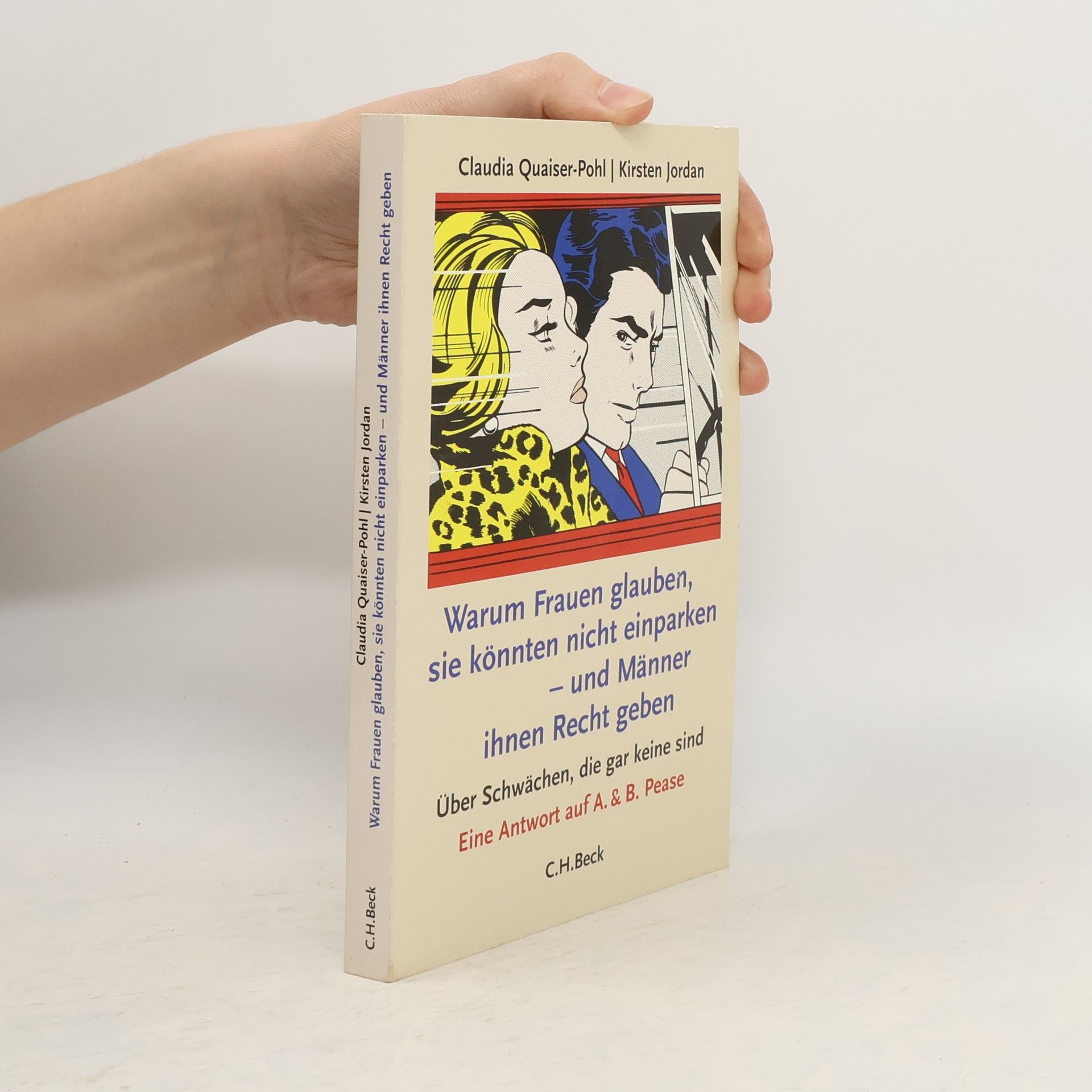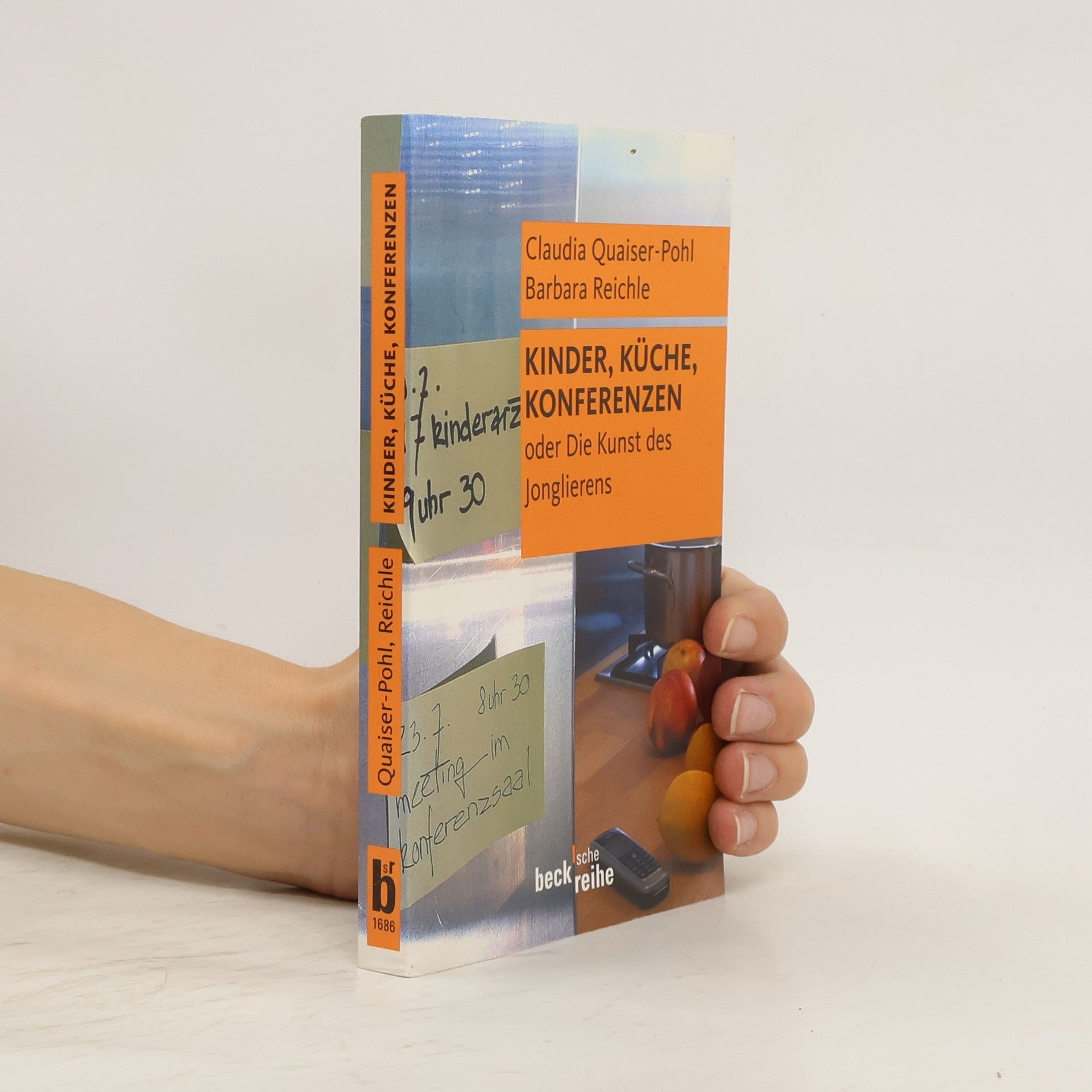Jede dritte Frau in Deutschland wird kinderlos bleiben. Unter den Akademikerinnen hat sogar fast jede zweite keine Kinder. Schon lange weiß man, daß dieses Phänomen mit der Schwierigkeit zu tun hat, Familie und Beruf zu vereinbaren. Dennoch gibt es viele Frauen, die beides möchten: Kinder und Karriere. Die Beispiele in diesem Buch zeigen, daß es nicht aussichtslos ist. Sie beantworten Fragen, die die meisten berufstätigen Mütter bewegen: Wie organisiere ich den Alltag und die Kinderbetreuung? Wie beziehe ich meinen Partner in die Familienorganisation mit ein? Wie bewahre ich bei den täglich passierenden kleinen Pannen einen klaren Kopf? Aber auch: Wann ist der richtige Zeitpunkt für das erste, zweite oder sogar dritte Kind? Wie manage ich die geforderte berufliche Mobilität und die nicht gerade familienfreundlichen Arbeitszeiten? Und vor allem: Wie finde ich neben dem ganzen Trubel auch noch Zeit für mich selbst und meinen Partner?
Claudia Quaiser-Pohl Book order


- 2007
- 2004
Die Autoren, eine Neurobiologin und eine Psychologin, liefern eine klare Antwort auf die weit verbreiteten, kommerziell erfolgreichen Bücher, die Männer und Frauen in genetisch unterschiedliche Klassen einordnen. Sie lehnen diese vereinfachenden Ansichten ab und fordern eine differenzierte Betrachtung. In einer fundierten Replik präsentieren sie aktuelle Forschungsergebnisse zum Thema Geschlechterunterschiede und kritisieren die Bücher, die Klischees über das räumliche Denken von Männern und Frauen bekräftigen. Die beiden Autorinnen und 13 Kollegen untersuchen, wie Erziehung, Umwelt, gesellschaftliche Einflüsse und persönliche Erfahrungen das Verhalten von Männern und Frauen beeinflussen. Sie erkennen an, dass es geschlechterspezifische Unterschiede geben kann, betonen jedoch, dass diese nicht die Identität einer Person definieren. Eine Frau kann gut einparken, und ein Mann kann gelegentlich den Überblick verlieren, ohne dass dies ihre Geschlechtszugehörigkeit in Frage stellt. Die 13 Kapitel sind übersichtlich gegliedert und enthalten Zeichnungen, Skizzen, Testbeispiele und Statistiken, die das Lesen angenehm und informativ gestalten. Die Autoren streben an, die oft trockene Wissenschaftssprache zu vermeiden und bieten stattdessen spannende Einblicke in neue wissenschaftliche Erkenntnisse aus Psychologie und Neurowissenschaften.